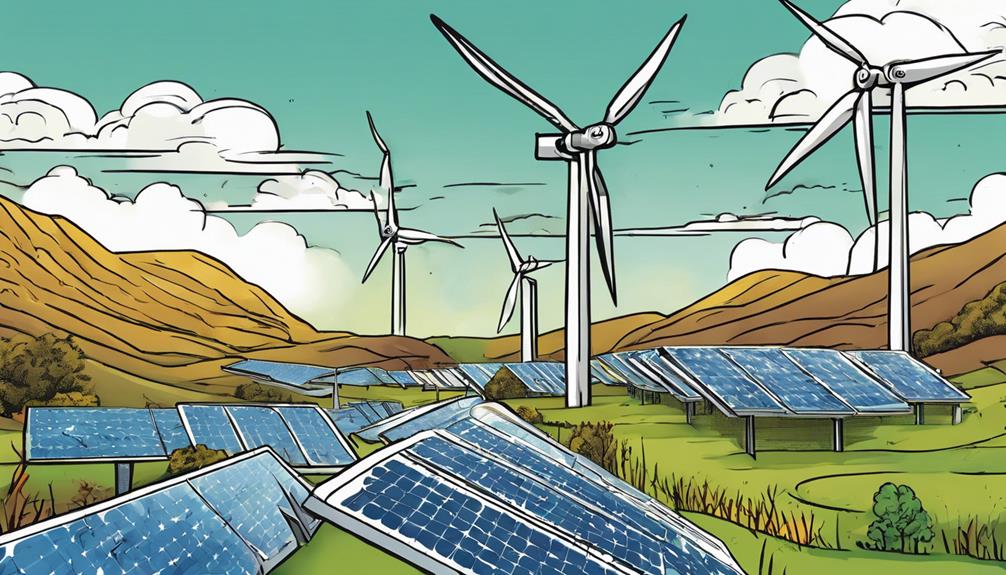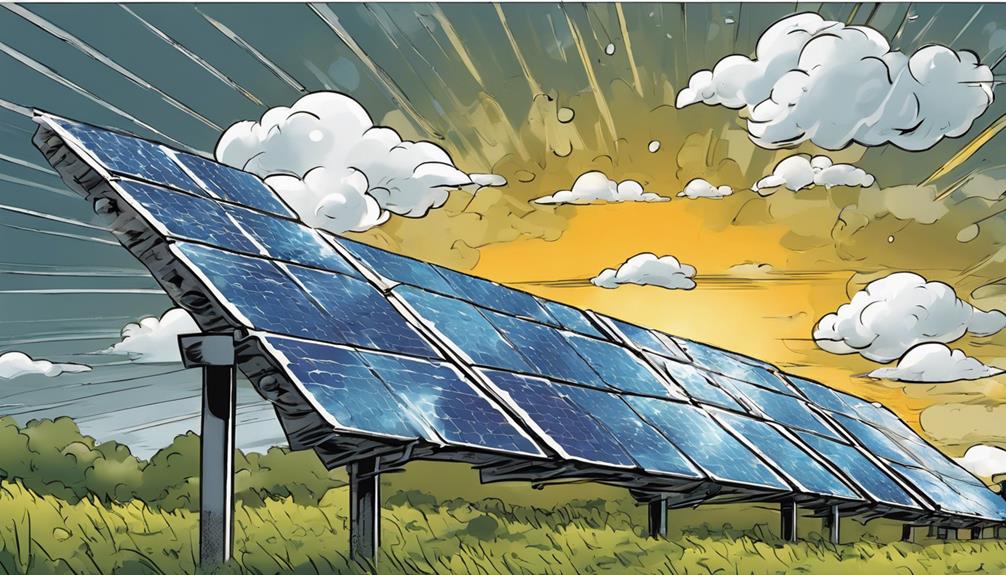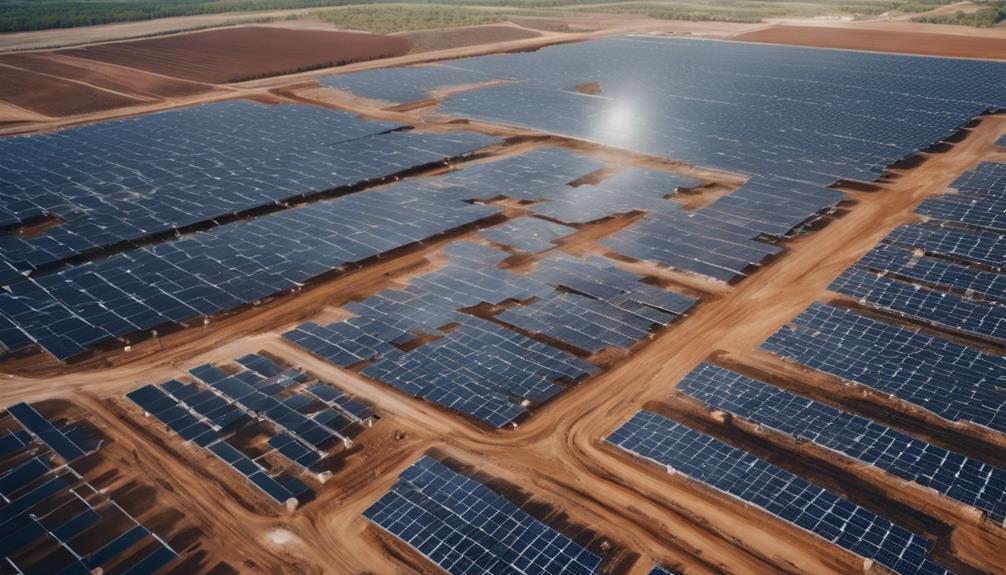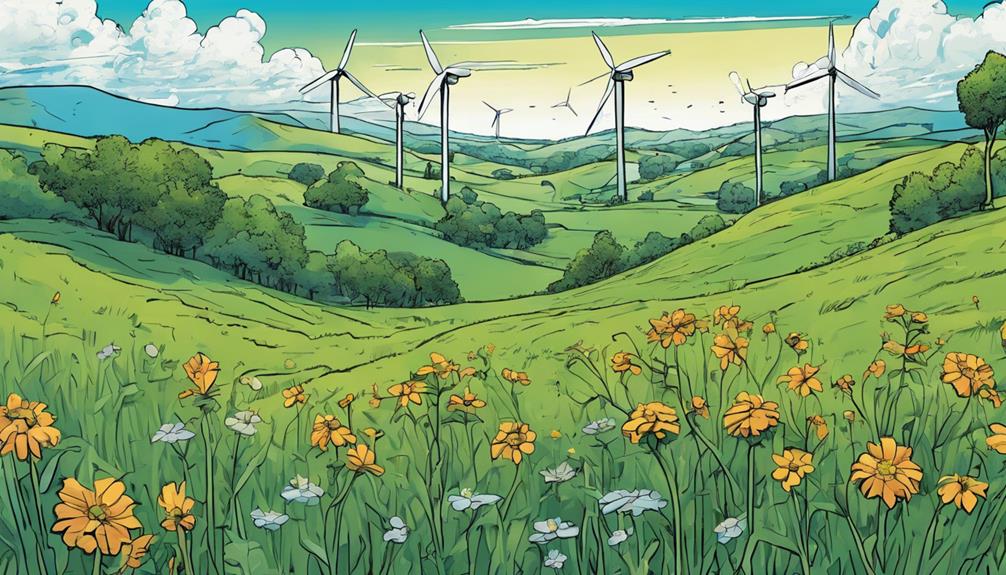If you're delving into renewable energy basics, know that solar, wind, hydroelectric, biomass, and geothermal power are essential sources. Solar energy contributes nearly 3% to U.S. electricity, while wind encompasses 9.2%. Hydroelectricity is the primary renewable source in the U.S., while geothermal energy has minimal environmental impact. These sustainable sources aim to reduce reliance on traditional fuels. Understanding these key energy types can help you grasp the foundations of renewable energy.
Key Takeaways
- Solar, wind, hydroelectric, biomass, and geothermal are key renewable energy sources.
- Impact assessments evaluate sustainability and guide mitigation measures for renewable energy projects.
- Renewable energy contributes 11% to U.S. energy consumption.
- Geoscience aids in identifying suitable sites for renewable energy projects.
- Challenges in adoption include cost barriers, technological innovation, and mineral demand.
Renewable Energy Sources
Renewable energy sources, such as solar, wind, hydroelectric, biomass, and geothermal energy, play a pivotal role in diversifying the U.S. electricity generation mix. Solar energy, harnessed through photovoltaic cells, contributes nearly 3% to the U.S. electricity generation, while wind energy, converted by turbines, makes up 9.2%.
Hydroelectric power stands out as the largest renewable energy source in the U.S., utilizing water force to generate electricity. Biomass energy, derived from organic materials, can also produce electricity, although certain forms may impact biodiversity. Geothermal energy, tapping into heat from the earth's core in power plants, is deemed a renewable and sustainable energy source.
These renewable energy technologies offer promising alternatives to fossil fuels, reducing greenhouse gas emissions and promoting energy independence. According to Energy Information, their increasing integration into the electricity generation mix signifies a shift towards cleaner and more sustainable power sources.
Environmental Impacts
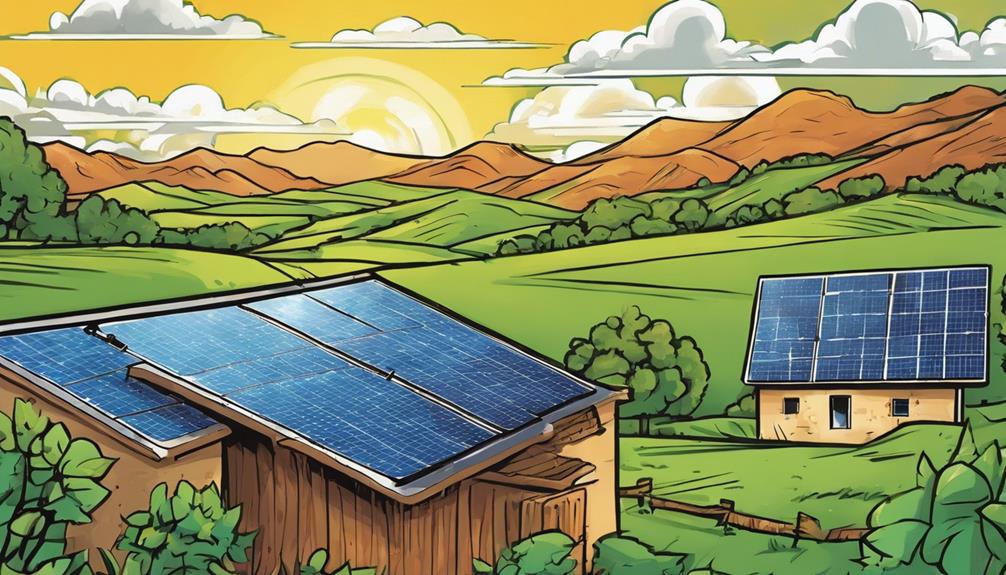
You must consider the importance of impact assessments when discussing the environmental effects of renewable energy sources.
These assessments help in evaluating the sustainability of energy projects and guide the implementation of measures to mitigate negative impacts.
Ensuring environmental sustainability is vital in the shift towards a cleaner and more sustainable energy future.
Impact Assessment Importance
Understanding the importance of impact assessments is key in evaluating the environmental implications of renewable energy projects. Impact assessments are essential for determining the sustainability and feasibility of utilizing renewable energy resources.
By conducting thorough environmental impact assessments, potential risks to ecosystems, water sources, and local communities can be identified and addressed proactively. These assessments also play a significant role in safeguarding biodiversity and natural habitats from any negative effects that might arise from renewable energy development.
Ensuring that impact assessments are conducted properly is crucial in aligning renewable energy projects with conservation and sustainability goals. Incorporating these assessments into the planning and implementation stages is essential to minimize adverse environmental consequences and maximize the positive impact of renewable energy initiatives on both ecosystems and communities.
Environmental Sustainability Measures
To evaluate the environmental impacts of renewable energy projects, one must take into account the measures for environmental sustainability. Renewable energy sources are generally more sustainable than non-renewables, with minimal adverse effects on the environment.
For example, geothermal energy is a sustainable and renewable source that has minimal environmental impacts. On the other hand, hydropower, especially large-scale plants, can have adverse environmental impacts despite being a renewable energy source.
Wind energy's environmental effects vary based on location and scale, with both positive and negative impacts. Solar power stands out for its minimal environmental footprint and production of clean energy.
U.S. Energy Consumption
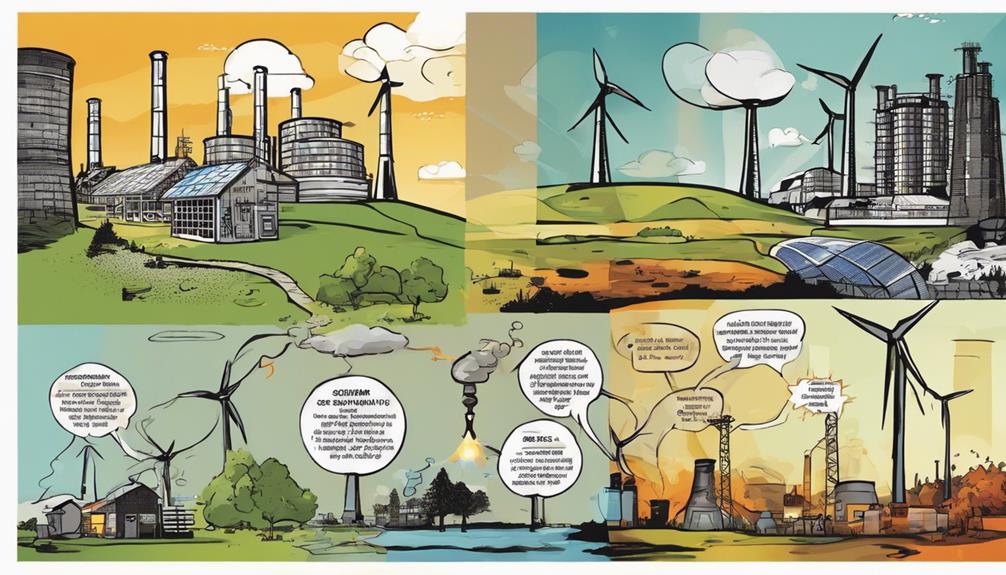
Renewable energy plays a significant role in U.S. energy consumption, accounting for approximately 11% of the total energy used in the country. The United States relies on a diverse energy mix, with hydropower leading the way as the largest source of renewable energy in the U.S. electricity sector. The implementation of Renewable Portfolio Standards has also influenced U.S. energy consumption, driving the adoption of more renewable sources.
Offshore wind farms are gaining attention for their potential in U.S. energy production, offering both advantages and disadvantages.
Additionally, geothermal resources contribute to the U.S. energy mix, providing a sustainable and reliable source of power.
As the U.S. continues to focus on reducing its carbon footprint and shifting towards cleaner energy sources, the role of renewables in the country's energy consumption is expected to grow further. By diversifying the energy mix and increasing renewable energy integration, the U.S. aims to achieve a more sustainable and environmentally friendly energy future.
Geoscience in Energy Development

Geoscience plays a pivotal role in the development of energy, particularly in identifying suitable sites and evaluating impacts for renewable energy projects. Geoscientists are essential in conducting impact assessments for mineral extraction, climate evaluation, ecosystem health, and water resource management related to renewable energy technologies. Their expertise allows for the identification of best locations for various renewable energy sources, such as solar, wind, hydro, tidal, and geothermal energy. By analyzing geological aspects, geoscience contributes significantly to the effective deployment of renewable energy technologies. Below is a table showcasing the key roles of geoscience in energy development:
| Geoscience Role | Energy Development Impact |
|---|---|
| Site Identification | Locating best locations for renewable energy projects |
| Impact Assessment | Evaluating effects on climate, ecosystems, and water resources |
| Mineral Extraction | Facilitating extraction processes for renewable energy technologies |
Challenges in Adoption

Geoscience's integral role in energy development highlights the challenges faced in the adoption of renewable energy technologies, particularly in addressing cost barriers and advancing technological innovation. When considering the challenges in adoption, several key factors come into play:
- Cost Barriers: The high initial costs associated with implementing renewable energy technologies often deter widespread adoption.
- Technological Innovation: Continuous advancements are critical to overcoming obstacles and improving the efficiency of renewable energy systems.
- Supply Chain Development: Establishing a robust and efficient supply chain is essential for the successful expansion of renewable energy sources.
- Policy Incentives: Government policies and incentives play a significant role in encouraging the adoption of renewable energy and driving market growth.
Additionally, the increased demand for minerals required in the production of wind turbines and solar panels poses a challenge to the adoption and growth of these technologies. Overcoming these challenges is vital for the successful integration of renewable energy into the global energy mix.
U.S. Energy Statistics
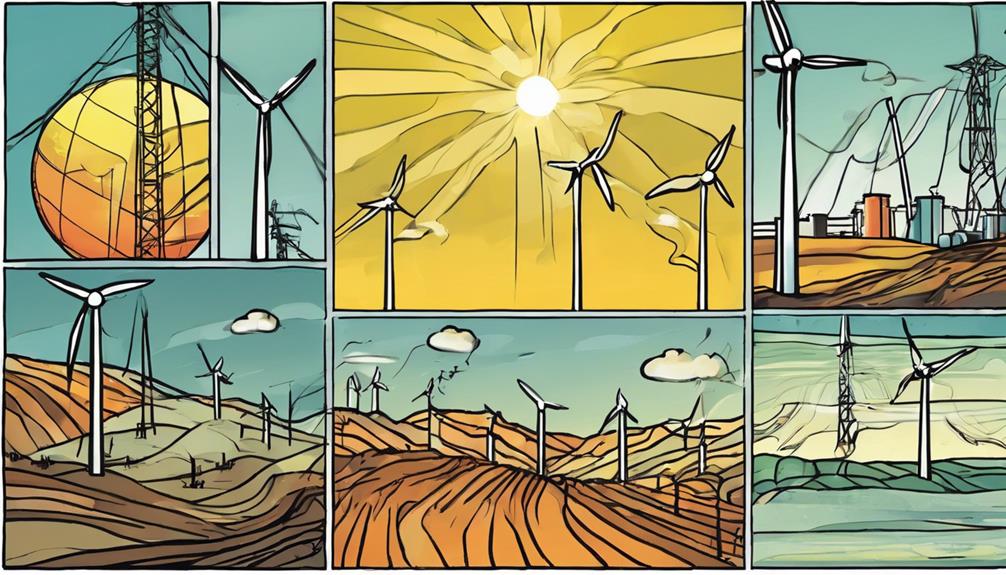
In the field of U.S. energy statistics, renewable sources contribute to approximately 11% of overall energy consumption. Hydropower stands out as the largest source of renewable energy in the United States, playing a pivotal role in electricity generation.
Over recent years, there's been a noticeable surge in renewable energy generation, with wind and solar power playing significant roles in diversifying the energy mix. Offshore wind farms have emerged as a promising avenue for renewable energy expansion, offering potential advantages but also encountering challenges within the U.S. energy landscape.
Additionally, the implementation of Renewable Portfolio Standards has been instrumental in driving the uptake of renewable energy sources across the country. These standards mandate that a certain percentage of energy production must come from renewable sources, thereby incentivizing the growth of renewable energy consumption in the United States.
Specific Energy Technologies

Solar energy and wind energy are prominent specific energy technologies in the U.S., contributing significantly to electricity generation. These technologies play a key role in the shift towards renewable energy systems.
Here are some key points about specific energy technologies in the U.S.:
- Solar Power: Utilizes photovoltaic (PV) cells and accounts for nearly 3% of U.S. electricity generation.
- Wind Power: Wind turbines convert wind power into electricity, making up 9.2% of electricity generation in the U.S.
- Biomass Energy: Generated from organic material, biomass energy can produce electricity, though some forms may result in higher carbon emissions.
- Geothermal Power: Harnesses heat from the earth's core in power plants, providing a renewable and sustainable energy source.
These technologies, along with others such as hydropower, are essential in diversifying the energy mix and reducing reliance on fossil fuels.
Embracing solar panels, wind turbines, biomass, and geothermal power showcases a commitment to a cleaner and more sustainable energy future.
Hydropower as a Renewable Source
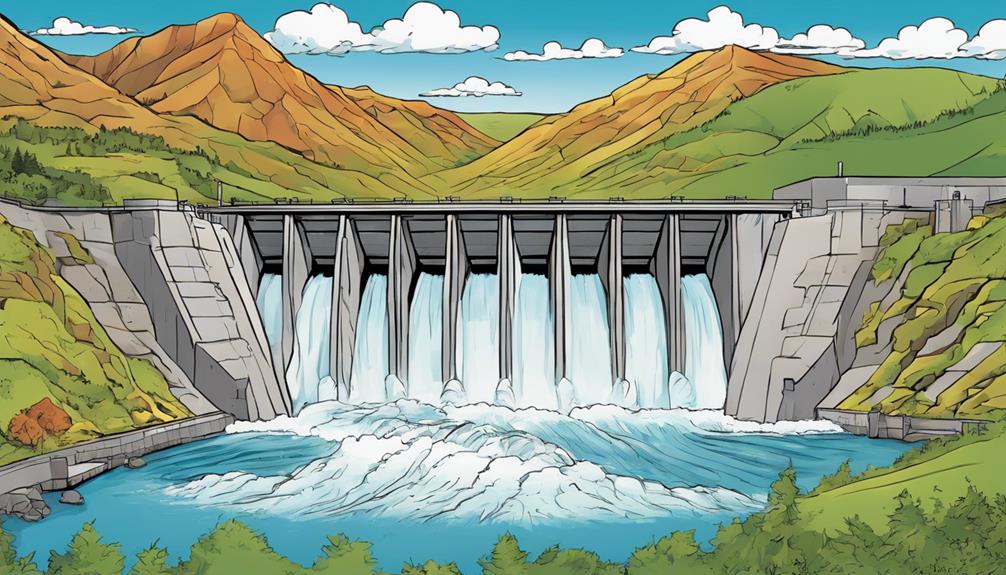
Hydropower holds an important role as the largest renewable energy source worldwide, contributing about 17% to global electricity production.
It's valued for its ability to provide baseload electricity, ensuring a stable power supply.
Understanding the environmental impacts and benefits of hydropower is essential for evaluating its overall sustainability.
Global Hydropower Production
Global electricity production is greatly influenced by the widespread utilization of hydropower as a renewable energy source. Hydropower contributes to about 17% of global electricity production and is the most common form of renewable energy used in over 150 countries. It's ideal for baseload electricity generation due to its reliability, making it a crucial component in meeting energy needs sustainably.
Countries like Canada heavily rely on hydropower for their energy requirements, showcasing its importance on a national scale. Hydropower has a long history of providing sustainable and renewable energy worldwide, making it a key player in the transition towards cleaner energy sources.
- Hydropower contributes to about 17% of global electricity production.
- It's the most common form of renewable energy used in over 150 countries.
- Hydropower is ideal for baseload electricity generation due to its reliability.
- Countries like Canada heavily rely on hydropower for their energy needs.
Environmental Impacts Assessment
Considering the environmental impacts of hydropower as a renewable energy source is essential in determining its overall sustainability and effectiveness in meeting energy demands. Hydropower accounts for approximately 17% of global electricity production, making it a significant player in the renewable energy sector. While large hydropower plants can have negative environmental impacts, small-scale hydropower projects are generally considered more environmentally friendly. Hydropower is utilized in over 150 countries and is particularly well-suited for baseload electricity generation due to its reliability.
| Hydropower Facts | Impacts |
|---|---|
| Accounts for 17% of global electricity production | Can have negative environmental impacts, especially in large plants |
| Used in over 150 countries | Small-scale hydropower is more environmentally friendly |
| Ideal for baseload electricity generation | Generally has fewer environmental and health impacts compared to non-renewable sources |
| Significant renewable energy source in the U.S. | U.S. derives around 7% of its electricity from hydropower |
Baseload Electricity Generation
When it comes to meeting the demands for constant electricity supply, baseload generation using renewable sources like hydropower plays an essential role. Hydropower is a common form of renewable energy, contributing around 17% to global electricity production. It's utilized in more than 150 countries and is particularly suited for baseload electricity generation due to its reliability.
Here are some key points to ponder about hydropower:
- Hydropower plants can have varying environmental impacts based on their size and location.
- Norway and Canada are prime examples of countries where hydropower plays a significant role in electricity generation.
- Hydropower is a sustainable source of renewable energy that helps in reducing carbon emissions.
- The versatility and scalability of hydropower make it an important player in the shift towards cleaner energy sources.
Frequently Asked Questions
What Is Renewable Energy Basic Info?
Renewable energy basics involve energy derived from natural sources like sunlight, wind, and water. It's sustainable, emits minimal greenhouse gases, and aids in reducing carbon footprints. Wind, solar, hydro, geothermal, and biomass are common types.
What Are 5 Facts About Renewable Energy?
You're curious about renewable energy, right? Well, here are five quick facts: Solar, wind, hydro, geothermal, and biomass are key sources. They power over 12% of U.S. electricity. Wind is affordable and geothermal uses Earth's heat.
What Is Renewable Energy for Beginners?
Renewable energy for beginners is energy derived from constantly replenished natural sources like sunlight, wind, and water. It's clean, sustainable, and essential for combating climate change. Embrace it to reduce greenhouse gas emissions and promote environmental sustainability.
What Are the 5 Main Types of Renewable Energy?
To understand the 5 main types of renewable energy, you should know that they include solar, wind, hydropower, geothermal, and biomass. These sources offer sustainable options for generating electricity and heating your home.
How Can Renewable Energy Help Improve Energy Efficiency?
Renewable energy can significantly boost energy efficiency. By utilizing sources like solar, wind, and hydro power, we can reduce reliance on fossil fuels and lower energy consumption. Educating individuals about these benefits through an energy efficiency brochure for savings can promote greater adoption of renewable energy technologies.
Conclusion
As you journey through the landscape of renewable energy, remember that each source holds the power to shape our future.
Just like a seed planted in fertile soil, these technologies have the potential to grow and blossom into a sustainable energy revolution.
Embrace the possibilities, nurture the progress, and watch as the renewable energy landscape blooms before your very eyes.
The future is bright, and it starts with embracing the power of renewable energy.
